Virtual and Augmented Reality offer an opportunity to give users an engaging new experience. The greatest thing about these technologies is their ability to let users experience all kinds of things right where they are, without travel or risk.
In the midst of this pandemic, opportunities for remote, immersive interactions are in high demand. Here’s a look at how the event planning industry can benefit from the desire of many people to replace risky offline experiences with completely safe online ones.
The problem with traditional events
Traditional in-person industry events often follow the same structure: they are held in a large venue to which participants and visitors must travel. Participants set up booths and displays to showcase their products or services, give lectures and classes, or answer visitors’ questions.
Visitors wander around the venue looking for activities that might interest them, or come specifically for one or several activities.
This approach poses several challenges for both event participants and visitors:
- Accessibility. As mentioned, offline events happen in big venues all around the world. You have your Customer Electronics Show happening in Las Vegas, Internationale Funkausstellung in Berlin, and Worldwide Developers Conference in California, to cite a few examples. For some, it can be difficult and costly to travel long distances to attend such events.
- Time constraints. Conferences might be held a long distance from each other, but relatively closely in time. That might make it impossible to attend several events one after the other. Even within one event, some activities of interest might overlap, making it impossible for a visitor to take in all of them.
- Emergency-caused limitations. Since we are going through a pandemic with few certainties about when restrictions will end, we need to consider that regional lockdowns may occur unexpectedly or continue for long periods of time. Farther down the road, even if quarantine measures are eased, we will have to consider the possibility of constraints being put in place again. Restrictions such as reduced limits for gatherings and closed international borders might negatively impact the number of people who can attend offline events. A drop in attendance can be a critical issue, considering the expense of putting on a big event.
- Engagement. Though this is not a critical issue, there is always room for improvement in the way companies attract customers and showcase their products. PowerPoint presentations, photos, and videos have become the norm and aren’t as fully engaging as they might once have been. And for some businesses, it is impossible to articulate value through these media.
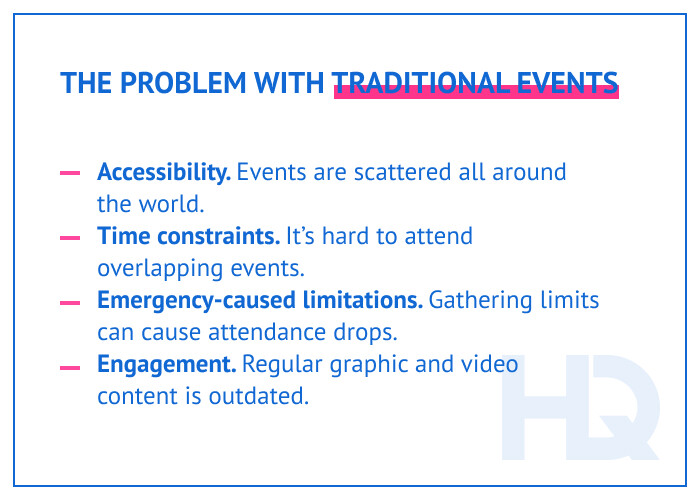
The problem with traditional events.
How AR and VR can solve the problems with offline events
Considering the rapid advances in Virtual and Augmented Reality and the challenges the event industry faces, it’s time to look into smarter ways of holding and attending conferences.
The key to success is to achieve a higher level of immersiveness and interactivity without proximity. That’s where implementing AR and VR becomes valuable.
There are two ways to offer an alternative to traditional offline events. The first is to set up a virtual analog of the offline conference, running in parallel. All of the activities happening offline are mirrored online, with the host of the event interacting with both offline and online visitors.
The second way is to hold the conference completely online. All of the activities can be adapted for an online experience, without the need for participants or visitors to travel anywhere.
Virtual Reality also offers great value when it comes to engaging people attending online. Companies can use the technology to entertain visitors while letting them explore the product or service.
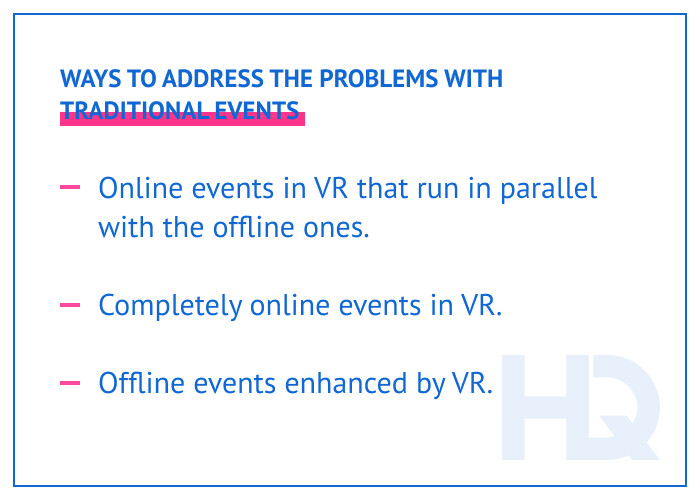
How to solve traditional events problems.
AR and VR applications for online and offline Events
Parallel online and offline events
One platform for online events adopts the structure of an offline conference. It includes two apps:
- “Meeting” application. The meeting application acts as a sort of virtual lobby. Here, the attendee can purchase a ticket to the event, register an avatar, get notifications with information on the event, and simply network with other visitors. Users can access this app any time of the year, even if there are no events happening at the moment. From the organization side, the application will help collect visitor data so as to promote future events.
- “Conference” application. Powered by VR, the conference is a completely virtual, 360-degree environment, in which online visitors attend activities with their avatars. The environment is set up in the same way as its offline analog, with places to sit, a stage, a screen for presentations, and banners for advertisements.
On the offline side of things, there are additional screens with the virtual environment so that the host can interact with the online attendees. Also, each host can hold their event remotely; in that case, offline visitors will see him or her on one of the screens in the venue. Offline attendees can also be offered the option of using their smartphone to see the host’s avatar in Augmented Reality.
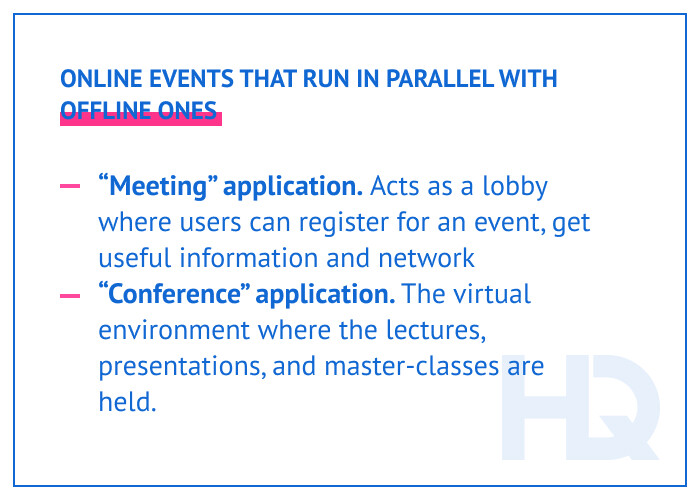
Online events run in parallel with the offline ones.
An online event enhanced with VR
Some planners may prefer ditching the offline event altogether and going completely online. In this case, VR can also be used to the benefit of hosts and visitors.
A great example of an online event held in Virtual Reality is the Virtual Medical Conference, or vMed20. The hosts used AltspaceVR, software that lets users set up virtual meeting spaces and attend those meetings with their avatars.
In those spaces, users can communicate over the internet. Everything about the experience is highly customizable.
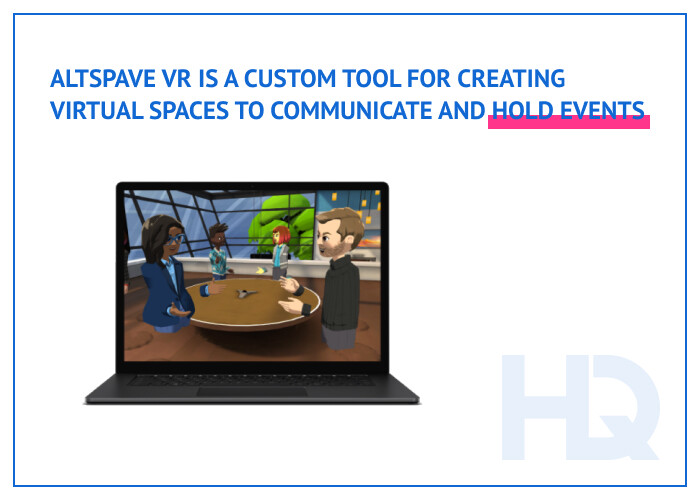
Online events held in highly customizable virtual spaces.
Applications of VR during offline events
Apart from the whole virtual event experience, AR and VR technology can be applied to provide an immersive experience during regular offline events. Tech can be used to entertain visitors and showcase products or services.
For instance, an insurance company, NRMA Insurance, designed a car-crash VR simulator to show how car safety features have improved over the past 30 years. The users wear a VR headset and sit in the driver’s seat. They go through a series of crash tests, each time with an older car, to see how they differ when it comes to protecting the driver.

NRMA car crash test VR simulator demonstrates car safety features.
Some home renovation companies attracted visitors to their booths by offering an opportunity to see, using VR, what a renovated living space would look like. Lowe’s gave visitors the chance to remodel their kitchen or bathroom virtually, using Oculus Rift, and then save their project. After the presentation, the visitors were given a Google Cardboard so they could view their design at any time.
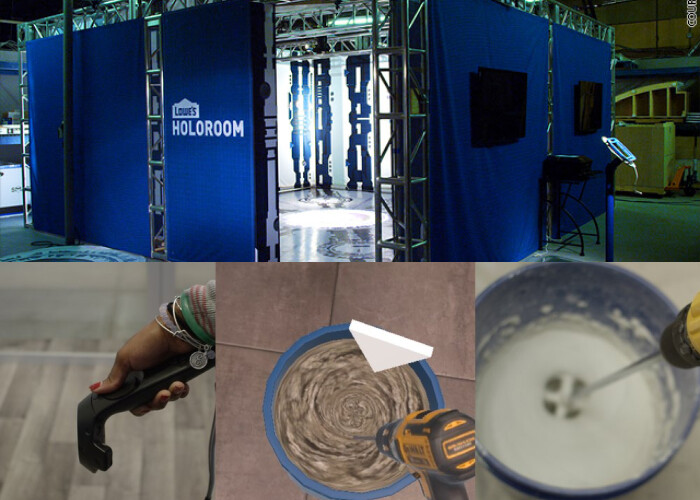
Lowe’s holoroom VR puts users into virtual spaces where they can model their houses.
A German railway company, Deutsche Bahn, applied Virtual Reality to their exposition at a career fair. To attract job applicants, they built a VR game that let visitors experience the workflow of train conductors, electricians, and construction workers.
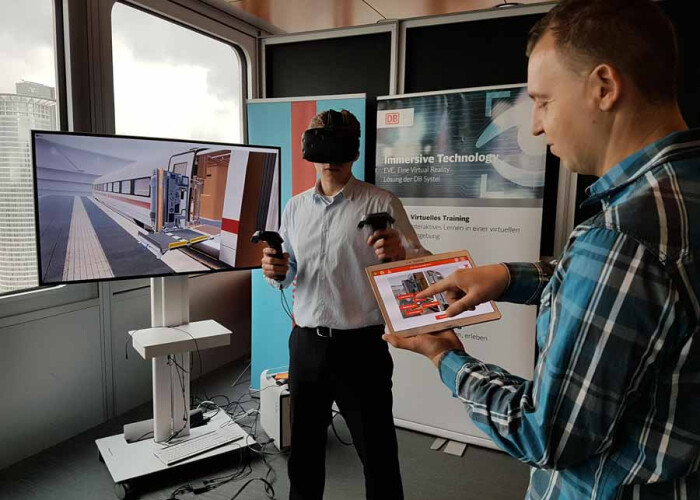
Deutsche Bahn offer the users to experience the workflow of transportation specialists in VR.
Hardware required for VR events:
Virtual Reality usually requires one or two pieces of hardware: a head-mounted display, or headset, and a PC to which the headset is tethered. If the headset is untethered, you won’t need the PC.
Tethered headsets
Tethered headsets require a PC to run the software. They are made for more complex VR experiences like games and environmental simulations. Within such a virtual environment, the user is able to walk around and interact with objects.
The best-known tethered headsets are Oculus Rift and HTC Vive.
Those headsets are great for providing the most engaging experience, but they are hard to scale and require several people to operate and maintain.
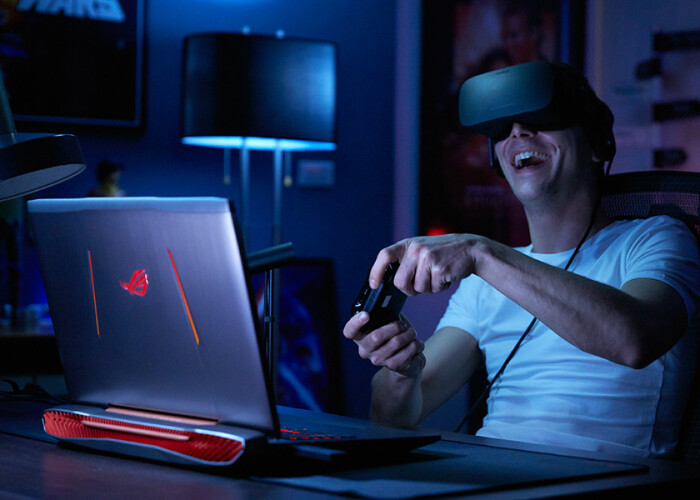
Tethered VR headsets require a PC to run the software.
Untethered headsets
Untethered headsets do not require a PC to run their software, but they still need an additional device. A smartphone fulfills that role. It is inserted into the headset and runs the VR experience, with the headset only used to view the content.
Such headsets are mostly used for non-interactive content: 360 tours, videos, or simple games.
Among these headsets, the most notable are Oculus Go, Samsung Gear VR, and Google Cardboard.
Untethered headsets provide more simple VR content with the tradeoff of ease of use and scalability.
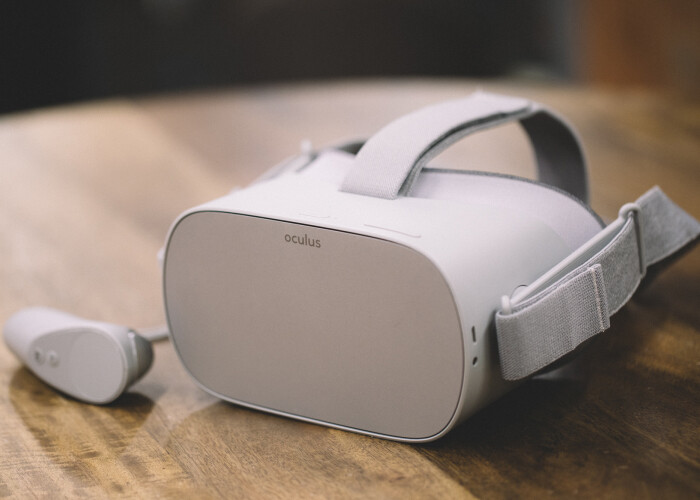
Untethered VR headsets like Oculus Go are autonomous.
Challenges of introducing AR/VR to online and offline Events
Even though implementing Virtual Reality can hugely benefit the event industry, it does come with several challenges:
- Cost of the hardware. VR requires a headset to run the software. More complex VR simulations and experiences also demand a powerful PC. Both the top-notch headset and the computer come at high cost, not to mention the expense of staff to operate the whole thing. For instance, the VR headset Oculus Rift S retails for $399.
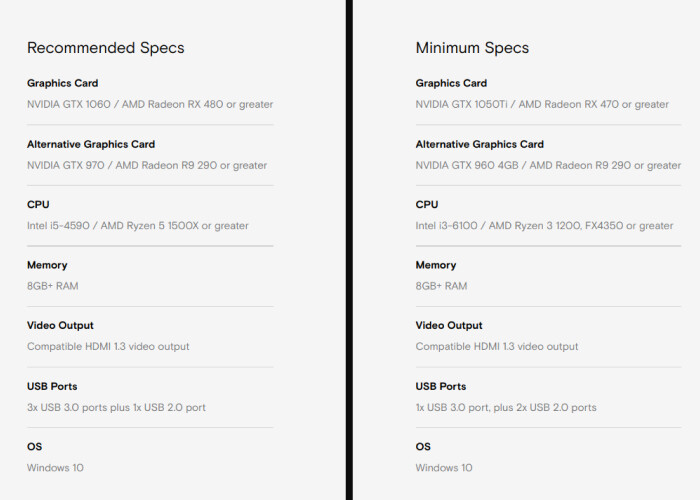
Running VR software requires a lot of computing power.
But there are more affordable alternatives. As mentioned above, there are untethered headsets on the market that do not need a PC — just a smartphone, which brings down the cost by a lot. There are literally dirt-cheap options, like Google Cardboard for $10-$15. Such tech is easy to operate, and maintenance can be performed by just one person.
Moreover, during lectures you may not need to rely on VR headsets: you can offer visitors the chance to view 360 videos using their own smartphone. Those are supported by any accelerometer-enabled mobile device. - Connectivity issues. During remote online events, everything is done over the internet, which might be a problem for visitors who don’t enjoy a good connection. Since the VR experience requires more bandwidth to stream content, it might be impossible for them to actually experience anything.
And that’s a problem not only for online events. During offline events, a lot of people may be simultaneously blogging or streaming on their phones. If the network can’t handle a large number of users, presenting a AR or VR experience with untethered headsets can get difficult.
But this problem will be resolved soon. Many countries are working on implementing 5G connectivity, which has much higher upload and download speeds, and wider bandwidth. The 5G network will be able to easily handle a large number of connections, and it will be available to everyone.
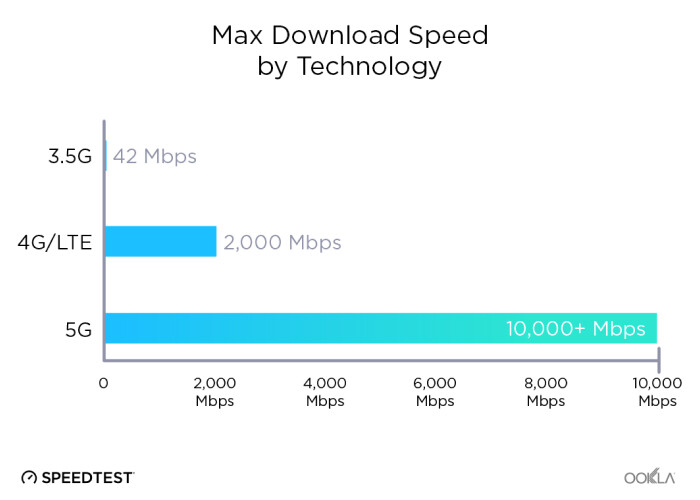
5G speeds compared to 3G and LTE.
What you can gain from using AR and VR for events
Introducing Virtual and Augmented Reality to the event organization can be mutually beneficial for event organizers, participants, and visitors.
For event organizers, using AR and VR technology can help reduce venue costs. Since fewer people will physically attend the event and more will opt for an online presence, organizers may be able to save money by renting a smaller venue.
Holding an online conference also means having no physical restrictions on the number of visitors. You will be able to invite as many people as you want; all they need is an internet connection and the required hardware.
Looking to build your AR/VR project?HQSoftware has a team of skilled professionals ready to tackle the project. Let’s talk!
Anna Halias
Business Development Manager
For event participants, AR and VR open more opportunities for creativity and therefore a wider variety of ways to engage visitors and convert potential clients. This can be achieved by overhauling the content that event participants present to visitors.
Various virtual experiences, such as tours, simulations, 360 videos, and interactive environments, will allow visitors to get a deeper understanding of your product or service and become more emotionally engaged.
For event visitors, technology simplifies the process of attending events. Instead of traveling long distances to attend conferences, people can participate in several events online, even if they overlap in time. This way, attendees save money on traveling without sacrificing immersiveness, unlike events held over Zoom or Skype with no advanced tech such as VR.
With advanced VR technology, nothing seems impossible. With a skilled software team, you can build unique VR experiences that will let you customize everything just the way you want it, representing your product in the best way possible.
The table below presents a roughly estimated time it will take to develop each of the AR/VR app types we discussed. The estimation is based on the average rate of $35/hour with the working hours of 168/month.
| Online/Offline meetings | Online only meetings | Demo app for offline event | |
| Duration | 4 months | 2 months | 1 month |
| PM | 192 h | 88 h | 40 h |
| BA | 168 h | 120 h | 32 h |
| Developer | 240 h | 168 h | 0 h |
| Mobile developer | 354 h | 0 h | 80 h |
| AR/VR developer | 640 h | 640 h | 80 h |
| QA | 168 h | 168 h | 40 h |
| DevOps | 120 h | 80 h | 0 h |
| Designer | 80 h | 80 h | 24 h |
| 3D Designer | 168 h | 0 h | 40 h |
| Content | 168 h | 0 h | 0 h |
| Total time: | 2130 h | 1256 h | 296 h |
| Total cost: | $74550 | $43960 | $10360 |

Founder
Hey! Welcome to our blog!
The topics we cover include IoT, AR/VR, related news, and our projects.If you’d
like to discuss an article, please
messsage
me on LinkedIn
Related Posts
View All
We are open to seeing your business needs and determining the best solution. Complete this form, and receive a free personalized proposal from your dedicated manager.

Sergei Vardomatski
Founder





